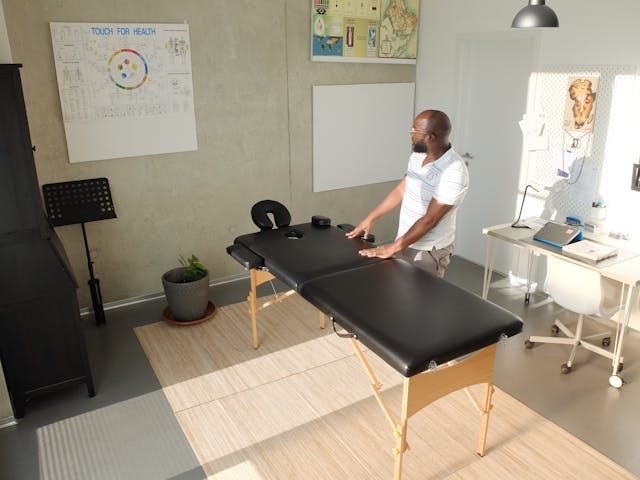Physiotherapy is a form of rehabilitation that works by providing therapy with the aim to provide relief to a person suffering from pain due to a joint or muscular issue or recovering from an injury or even surgery. It is also aimed at people with disabilities that interfere with their daily activities and at improving the overall functionality of the body.
In a physiotherapy session, there are multiple ways in which a session can be conducted. It all depends on what is required. A physiotherapist, when working with a patient, looks at their entire diagnostic history, such as past medical reports, imaging tests, and present feedback from the patient. All of this is done to ensure the best treatment is provided. When going to a physiotherapist, one question that bothers many is: how long will it take? How long does physiotherapy take to work? How long does physiotherapy take for a broken ankle? These are simple questions that many raise, but the answer is rather complex.



Physiotherapy session
Physiotherapy is done in a series of sessions that generally last for a couple of days or weeks. A person can get his therapy either by visiting the clinic or by calling the therapist at home if it is not possible to go out. This is similar to when a person goes to meet a general practitioner. A typical physiotherapy session generally involves a mix of different exercises and the use of physiotherapy modalities. Some exercises are done by the therapist while can be performed by the patient under the guidance of the therapist.
This all depends on the condition of the patient and how the session is planned. Some conditions require certain warm-up exercises before any modality is used, while in other conditions, the session may start with the use of certain modalities (Ultrasound, TENS, etc.). The goal of physiotherapy is to reduce pain or stiffness in the body and reverse the reduction in movement or limitation in other body functions.



The time needed for physiotherapy
Physiotherapy is known for providing relief, but it does take its time to work. Why? Well, because the human body requires time for healing its muscles and bones. It is not like taking medicine. A medicine needs to pass through the blood barrier and starts working according to its chemical composition, while methods involved in physiotherapy take time. It also depends on various other factors. A normal session typically lasts for 30 to 60 minutes. This time may increase or decrease during the treatment.
The patient may be done within less time if they are showing signs of improvement or may require more time even when the body is showing improvement, due to changes in methods such as the addition of more exercises that were not possible previously due to a limited range of motion. Still, around 30 to 60 minutes is the most common time frame needed for a session. Within this time frame, proper treatment involving modalities can easily be provided.



Different conditions and Physiotherapy sessions
Now that we have talked about the time needed during a session, it is also important to discuss the duration for which physiotherapy is required. There are two types of medicalf conditions, namely chronic and acute. An acute condition is generally recent and gets fixed in a short time, while a chronic medical condition may require additional time.
In physiotherapy, both chronic and acute conditions are treated differently. Acute conditions, such as a minor injury, may require a few sessions or a few weeks. Conditions that are more severe and have been ongoing for a long time may need several months to heal properly. Whatever the condition may be, it is necessary to cooperate with the therapist and understand the treatment properly.



Factors affecting the session
Many factors might affect the session and cause it to go on for a longer time. Firstly, if the condition of the patient is not good, the session may take longer. For example, if someone had a knee injury and had to undergo surgery, they’ll have to continue with the therapist for longer sessions. Another factor is how the body is responding to the treatment. Sometimes, even with the best therapist, the body might need more time. This can be due to various reasons such as the degree of injury, age, deficiencies, or genetics. Also, many times the longer session could be due to an inexperienced therapist. A good therapist is able to quickly understand the situation and plan a treatment accordingly, but someone with inadequate knowledge or experience may take more time to understand the condition properly.
So, from all this, it can be concluded that a physiotherapy session is not the same for everyone. The goal of physiotherapy is to heal the patient completely, which may take its own time depending on several factors. What matters most is the cooperation of the patient with the therapist and a level of trust on the therapist. A patient should have a positive attitude towards the treatment and should believe in physiotherapy. So matter how long the treatment takes, every advice given by the Physiotherapist should be followed.
Write and Win: Participate in Creative writing Contest & International Essay Contest and win fabulous prizes.










